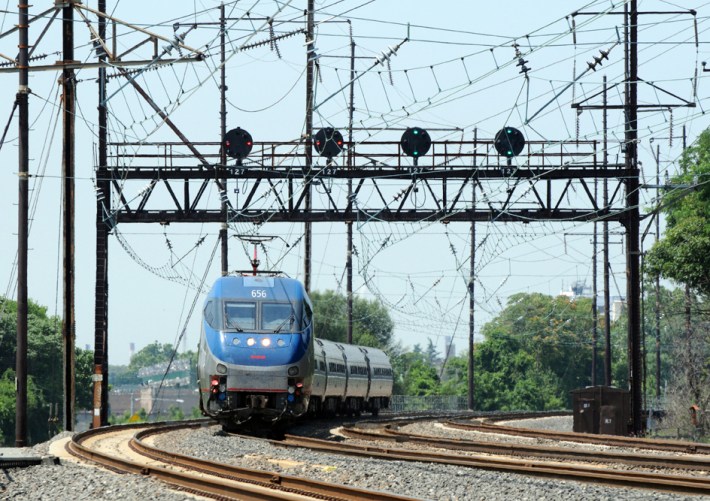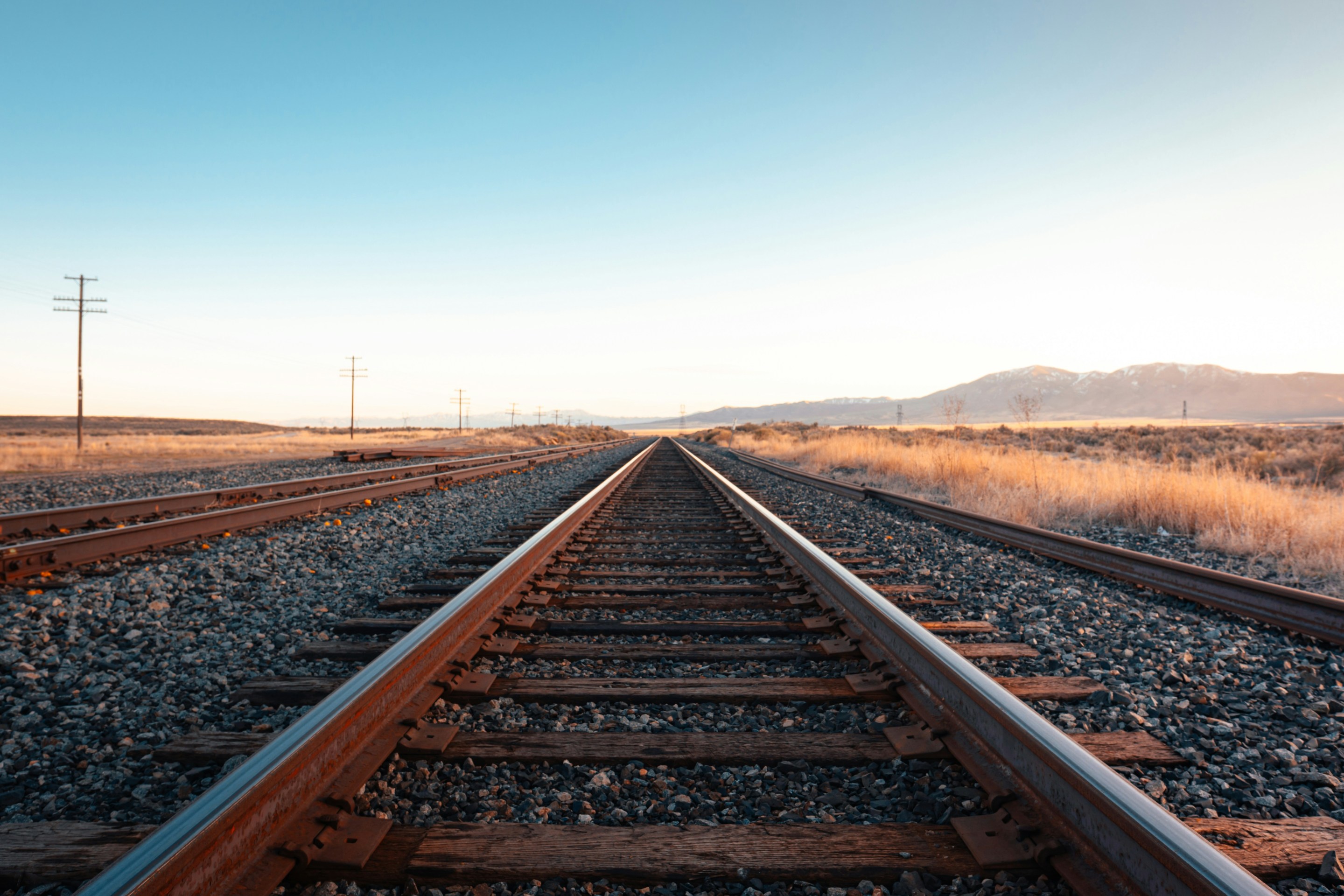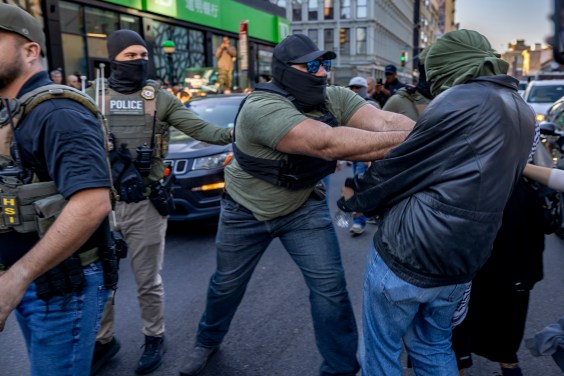House Republicans, led by Transportation Committee leaders John Mica (R-FL) and Bill Schuster (R-PA), have a plan to take the Northeast Corridor out of Amtrak’s control and privatize it. They’ve long called Amtrak a “Soviet-style operation” that loses money.

Mica said that ridership of the NEC hasn't changed since 1977, the year after Amtrak took over the corridor: a record he calls “one of the most dismal on earth.” [PDF] Amtrak advocates contend that chronic underfunding has starved the system, creating a situation that would make world-class service impossible. They also point to record ridership system-wide in seven of the past eight years, mostly due to the increase in state-supported service. (Representatives from Amtrak would have spoken on behalf of the railroad but were not invited to testify.)
The Mica/Shuster plan would separate the Northeast Corridor from Amtrak and transfer it to USDOT initially, then spin it off as a separate business unit. A competitive bidding process would determine who takes over the title. That entity would have to establish high-speed service from Washington to New York that takes under two hours (doing it in 15 years, not 30, as Amtrak proposed) while reducing or eliminating federal subsidies. They plan to include this proposal as part of the surface transportation reauthorization bill.
Mica and Schuster stress that organized labor would keep all its protections and that the plan would boost employment, but unions are having none of it. Edward Wytkind, president of the AFL-CIO’s Transportation Trades Department, said Amtrak’s 30-year plan for high-speed rail includes all the private sector participation it needs. “There is no high-speed passenger rail system in the world that operates without significant government assistance,” he said. “Private sector companies simply cannot make a profit without federal support.”
He said private entities taking over the most profitable part of Amtrak’s system would “let the rest of the system wither” and he simply didn’t see what the country would be getting in return for this valuable transportation asset.
Wytkind reminded members of Congress that when Amtrak took over the NEC in 1976, it was because the private company that had been running it had gone bankrupt and no one else wanted it.
Ranking Democrat Nick Rahall echoed Wytkind’s point. “We created Amtrak because the private sector didn’t want to operate unprofitable passenger rail service,” Rahall said. “Private companies did not want to run passenger rail service then and I am not convinced they want to do it now... Just two years ago, DOT issued a request for proposals for private companies to develop high-speed rail in the U.S. Guess how many companies were just chomping at the bit to get their hands on these projects? Not one. Not one single proposal was submitted by the private sector for developing high-speed rail on the Northeast Corridor.”
D.C. Delegate Eleanor Holmes Norton added, “Amtrak has shown it knows how to run a railroad, because the Northeast Corridor is profitable. And guess what? Those profits are helping to pay for your districts. It’s the only part of the system that is profitable. So you’ve got to ask yourself: What are you going to do about the rest of the country if Amtrak goes private?”
Rahall said Acela constitutes a significant jump in the quality of rail service in the country, that Amtrak has made improvements, that its ridership is up and it is making money on the NEC. “We should be celebrating Amtrak’s 40th birthday,” Rahall added, “not trying to kick it in the caboose by selling off its assets.”
Some speakers saw middle ground options between full privatization and the status quo. Ignacio Jayanti, who served on an Amtrak blue ribbon panel in 1997, suggested that a separate organization should manage the infrastructure but Amtrak should continue to run the operations. He said infrastructure maintenance was the root of most of Amtrak’s shortfall and was harder to attract public support for. However, the federal government would still own and, ultimately, control the infrastructure. It would also lend up to $25 billion in rail funds, to be more than matched by $50 to $60 billion in private sector capital.
Thomas Hart of the U.S. High-Speed Rail Association thought it should be the other way around. “America has a history of investing in state-of-the-art transportation infrastructure with the government funding the base infrastructure and private companies operating the transportation vehicles within that base infrastructure,” Hart said. “That is how our highway system and our aviation systems were built and operate today.”
Of course, all of this is predicated on the idea that Amtrak is consuming too much public funding. But many Amtrak advocates say the problem is that it’s been underfunded and that the expectation that rail should pay for itself is ludicrous, since no transportation mode pays for itself – even cars. “Last year, we spent more than $40 billion on highways,” testified Sen. Frank Lautenberg (D-NJ). “Over Amtrak’s entire 40-year history, it’s received just under $38 billion.” Even Carlos Bonilla, testifying from the libertarian, anti-rail Reason Foundation, concurred with that. Some Democrats mused that if the government could bail out Wall Street, which had created a monumental economic crisis, it could lend a helping hand to Amtrak.
Eleanor Holmes Norton urged Shuster and Mica to leave the Amtrak privatization plan out of the transportation reauthorization, predicting that this controversial proposal would kill the bill. Lautenberg later told reporters that the privatization plan "hasn't begun to get any legs to stand on as I see it" and that it would amount to a "death potion" for the transportation bill, according to the Wall Street Journal. Even Republican committee leaders said the plan could probably pass the House but would fail in the Senate.





